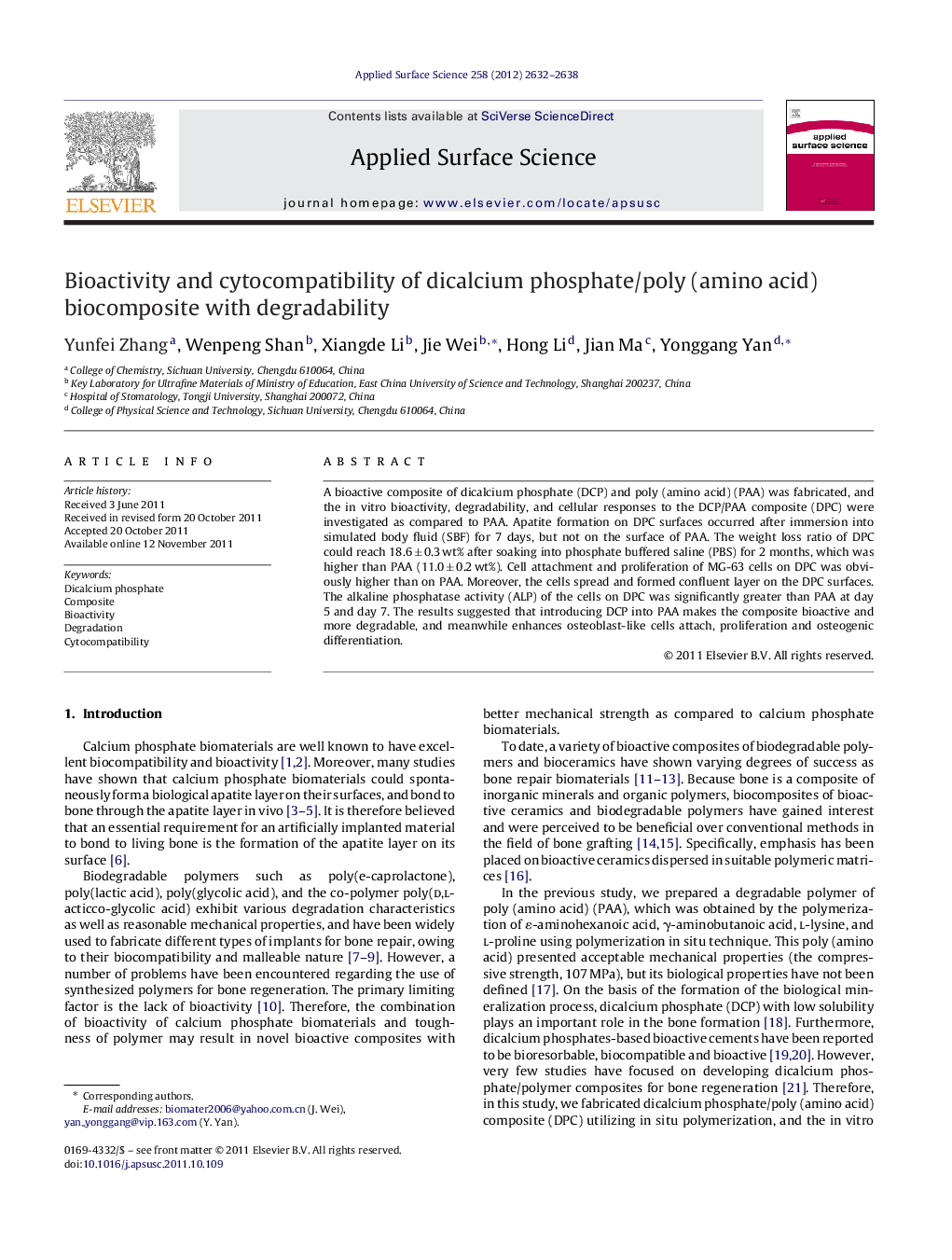| Article ID | Journal | Published Year | Pages | File Type |
|---|---|---|---|---|
| 5366522 | Applied Surface Science | 2012 | 7 Pages |
A bioactive composite of dicalcium phosphate (DCP) and poly (amino acid) (PAA) was fabricated, and the in vitro bioactivity, degradability, and cellular responses to the DCP/PAA composite (DPC) were investigated as compared to PAA. Apatite formation on DPC surfaces occurred after immersion into simulated body fluid (SBF) for 7 days, but not on the surface of PAA. The weight loss ratio of DPC could reach 18.6 ± 0.3 wt% after soaking into phosphate buffered saline (PBS) for 2 months, which was higher than PAA (11.0 ± 0.2 wt%). Cell attachment and proliferation of MG-63 cells on DPC was obviously higher than on PAA. Moreover, the cells spread and formed confluent layer on the DPC surfaces. The alkaline phosphatase activity (ALP) of the cells on DPC was significantly greater than PAA at day 5 and day 7. The results suggested that introducing DCP into PAA makes the composite bioactive and more degradable, and meanwhile enhances osteoblast-like cells attach, proliferation and osteogenic differentiation.
Graphical abstractA bioactive composite of dicalcium phosphate and poly (amino acid) was fabricated, and the in vitro bioactivity of the composite was investigated. The results indicated that the composite is bioactive with apatite formation on its surfaces after immersion into simulated body fluid for 7 days.Download full-size imageHighlights⺠Dicalcium phosphate and poly (amino acid) bioactive composite. ⺠Apatite formed on composite surfaces after immersion into simulated body fluid. ⺠Composite could be slowly degradable in phosphate buffered saline. ⺠Dicalcium phosphate in composite improved cell proliferation and differentiation.
